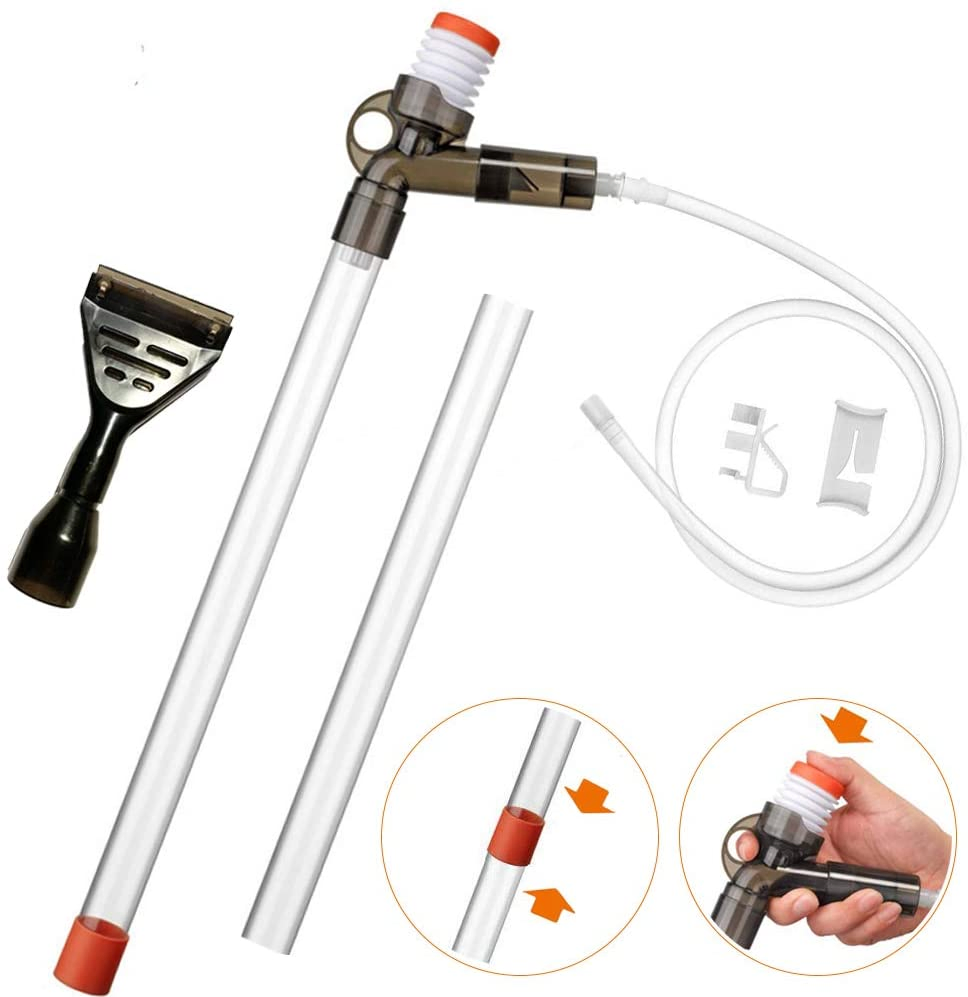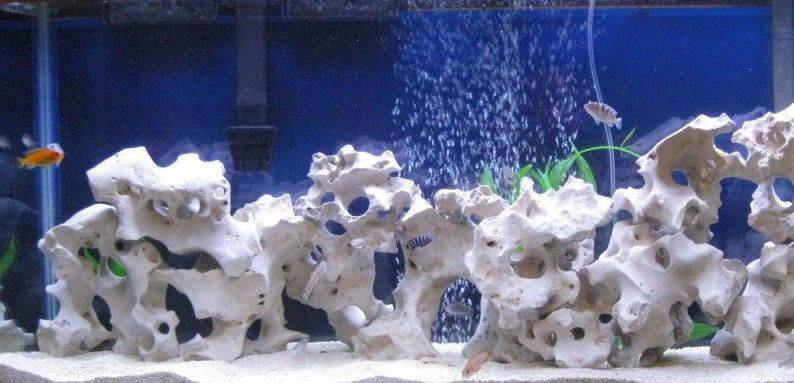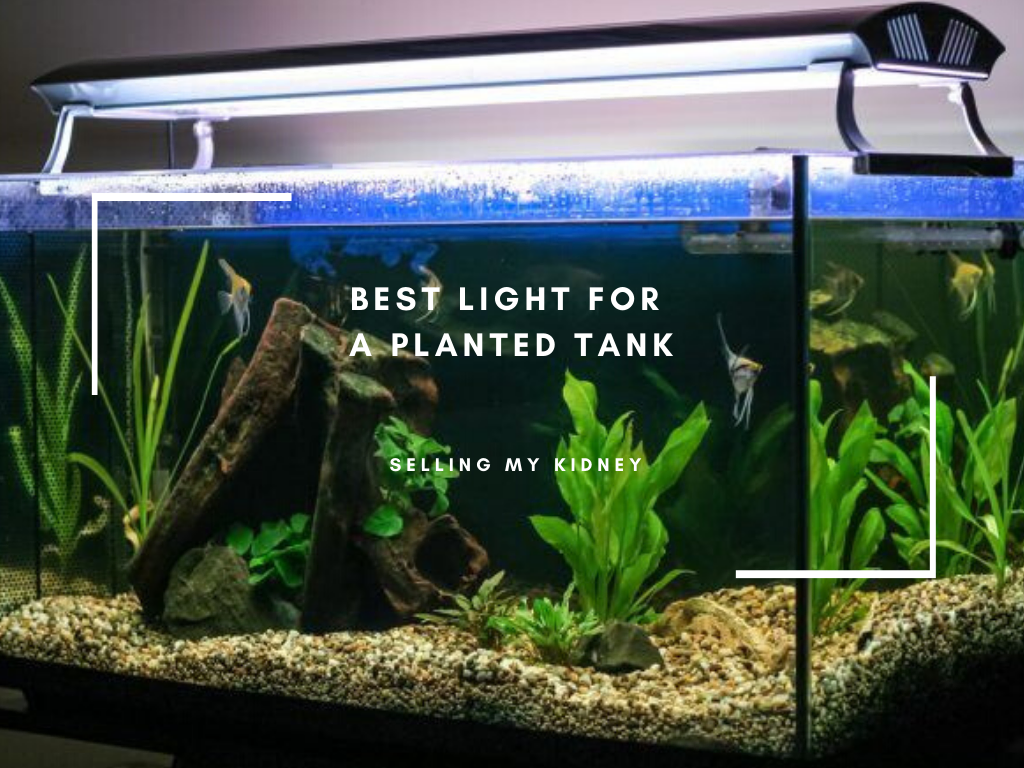One of the hardest parts of fishkeeping is maintenance. No matter what, you can’t escape cleaning your aquarium periodically and performing regular maintenance duties. But when it comes to aquarium maintenance duties, your best friend will be a good aquarium vacuum cleaner.
However, choosing the best aquarium vacuum cleaner for gravel is not an easy task. The wrong choice could prove lethal for your beloved fish!
In addition, only a few good brands offer the great results which they claim to.
Today, we will look into the best aquarium vacuum cleaners for gravel on the market which can truly help you with your tank maintenance tasks.
You can also read our guide to this topic.
So, let’s get started!
Product | Tank Size | Rating | Price |
|---|---|---|---|
Python No Spill Clean and Fill Aquarium Maintenance System–The Best Aquarium Gravel Cleaner | Medium to Large | ||
EHEIM Quick Vac ProAutomatic Gravel Cleaner and Sludge Extractor- PetOverstock – The Runner-Up | Small to Medium | ||
TERAPUMP Genuine Aquarium Pond Fish Tank Cleaner – The Budget King! | All Tank Sizes | ||
SunGrow Aquarium GravelCleaner Kit – The Cheapest Solution! | Small Tanks Only | ||
Jeeco 5 in 1 Fish Tank Cleaner – Best Gravel Vacuum Cleaner for Small Tanks | All Tank Sizes | ||
Hygger 396GPH Electric Aquarium Gravel Cleaner – The Premium Option | Medium to Large | ||
Yokgrass 5 in 1 Fish Tank Cleaner – More Functionality, Lower Cost! | All Tank Sizes |
Top 7 Best Aquarium Vacuum Cleaners for Gravel in 2020
1. Python No Spill Clean and Fill Aquarium Maintenance System – The Best Aquarium Gravel Cleaner

For a large number of expert fishkeepers and hobbyists, Python No Spill Clean and Fill is the go- to option for a good gravel cleaner.
The reasons are simple. It is the only model on the market that comes with the best features of an electric model and a manual model.
Despite following the working principle of manual gravel vacuum cleaners, the Python gravel cleaner doesn’t rely on siphons or buckets!
Notable Features
- Non-electric design which works with normal water pressure– Doesn’t require buckets or siphons– Complete spill-proof design– Long 10-inch gravel tube with a 25-foot long overall system– Can be connected to faucets of all sizes– Five different models are available in different sizes
Pros
- Superb cleaning quality
- Creative design eliminates the need for a siphon or bucket
- Environmentally-friendly materials
- Great suction ratio
Cons
- The learning curve is long; not a newbie-friendly design
2. EHEIM Quick Vac Pro Automatic Gravel Cleaner and Sludge Extractor– The Runner-Up

People will always buy a product which offers greater convenience and ease-of-use. When it comes to convenience, there is no other gravel cleaner that even comes close to the EHEIMQuick Vac Pro Automatic Gravel Cleaner.
Not only it is a battery-operated electric aquarium cleaning pump, but it also removes the need for all kinds of tubes and wires.
Think of it as a simple, handy cleaner.
Notable Features
- Fully battery-operated automatic design– Complete tubeless design– Doesn’t require bucket, hose, long pipe, or siphon– Clean water flows back into the aquarium– Small and handy and utilizes the one-handed operation principle
Pros
- Easy-to-use
- Saves you from the complication of tubes and wires
- Very powerful
- Sends clean water back to the aquarium
Cons
- Requires a minimum depth of 12 inches to function properly
- Can’t be used in an aquarium containing sand or similar fine-grain substrate
3. TERAPUMP Genuine Aquarium Pond Fish Tank Cleaner – The Budget King!

Let me clarify one thing – an aquarium vacuum cleaner is a simple device, and it should always maintain simplicity.
If you are looking for simplicity, TERAPUMP Genuine Aquarium Pond Fish Tank Cleaner is the ideal model for you.
It uses a traditional handpump based design principle which will serve you efficiently without being too tough on your pocket.
Notable Features
- Manual non-electric model– Comes with hose clips to avoid accidental water spillage– Has two different nozzles for drainage and deep cleaning of food and other large debris– Comes with a suction cup and offers one-handed usability– Capable of pumping 1.5 gallons per minute– Comes in three models to serve all tank sizes– Comes with a nozzle extension to avoid harm or damage to aquatic life
Pros
- Environmentally-friendly
- Budget-friendly option
- Simple working principle
- Can be used in an aquarium with sand
Cons
- Time-consuming cleaning process
- Relies on the older siphon-hand pump-bucket working principle
4. SunGrow Aquarium Gravel Cleaner Kit – The Cheapest Solution!

If you liked the previous option, then you will love the SunGrow Aquarium Gravel Cleaner Kit too. These two products are basically identical in terms of functionality and usage.
However, you will find some minor differences. SunGrow’s cleaner is mainly designed for smaller tanks with small fish.
Notable Features
- Manual non-electric model which uses a hand pumping mechanism– Netted nozzles ensure safety for aquatic life– Easy assembly (within 2 minutes)– BPA-free durable plastic construction– Uses long 43-inch tubing and ensures clog-free water flow
Pros
- Environmentally-friendly
- Budget-friendly option
- Simple working principle
Cons
- Time-consuming operation
- Only suitable for small aquariums
- Relies on the older siphon-hand pump-bucket working principle
5. Jeeco 5 in 1 Fish Tank Cleaner – Best Gravel Vacuum Cleaner for Small Tanks

You will mostly find two types of manual cleaners on the market – one uses a squeezing hand pump mechanism, and the other uses a thumb-press mechanism.
Jeeco 5 in 1 Fish Tank Cleaner falls into the latter category. Its biggest selling point is its versatility.
The multi-functionality enables the cleaner to serve five major cleaning purposes:
> Water changing> Sand washing> Excrement absorbing> Sand raking> Algae scraping
Notable Features
- Manual non-electric model which uses an air-pressing mechanism– Replaces the older hand pump with a handgun-style air-pressing button– Serves five different purposes, including sand raking and algae scraping– Comes with two different water inlet tubes which can be used separately or combined– Comes with a fish protector apparatus which prevents physical damage to aquatic life– Utilizes gravity efficiently for easier operation
Pros
- Creative design principle
- Serves multi-functional purposes
- Doesn’t pose any harm to fish
- Easy-to-use
Cons
- Prone to rusting
- Only suitable for smaller tanks
6. Hygger 396GPH Electric Aquarium Gravel Cleaner – The Premium Option

An electric vacuum cleaner will always offer you better ease of use. In addition, it will offer more power that eventually results in better cleaning.
I would call Hygger 396GPH Electric Aquarium Gravel Cleaner the ideal electric vacuum cleaner.
It offers the highest usability and functionality while making the entire cleaning process easy and efficient.
Notable Features
– Fully-electric aquarium gravel cleaner– Comes with six different attachments which serve different purposes– Fully adjustable water pressure stops water pressure harming your fish– Offers strong 396 GPH water flow rate for better cleaning– Can be used in an aquarium with sand and micro-grain substrates– Fully adjustable handle
Pros
- Easy-to-use
- Extremely powerful
- Doesn’t pose any harm to fish
- Multi-functional usage
- Suitable for all tank sizes
Cons
- Comparatively expensive
7. Yokgrass 5 in 1 Fish Tank Cleaner – More Functionality, Lower Cost!

Yokgrass 5 in 1 Fish Tank Cleaner is another gravel cleaner which follows the design principle of the air-pressing mechanism.
If you are looking for functionality at a low cost, you can choose between Yokgrass and Jeeco.
Notable Features
- Manual non-electric model which uses an air-pressing mechanism– Replaces the older hand pump with a handgun-style air-pressing button– Serves five different purposes, including sand raking and algae scraping– Comes with two different water inlet tubes which can be used separately or combined– Comes with a fish protector apparatus to prevent physical damage to aquatic life– Utilizes gravity efficiently in order to offer easier operation
Pros
- Creative design principle
- Serves multi-functional purposes
- Doesn’t pose any harm to fish
- Easy-to-use
Cons
- Prone to rusting
- Only suitable for smaller tanks
Buying Guide: How to Choose the Best Aquarium Vacuum Cleaner for Gravel
What Is The Size of Your Tank?
As a vacuum cleaner will siphon the water from the tank, an over-powerful cleaner can pose serious damage to your small fish. To be on the safe side, you should choose a vacuum cleaner which compliments the size of your tank or aquarium.
That being said, always buy smaller (or less powerful) vacuum cleaner for smaller tanks. The nozzles on the cleaner should be small too.
So, you should always check the recommended size of the tank on the packaging of your desired vacuum cleaner.
One size definitely doesn’t fit all!
The Size of the Substrate
The grain size of the substrate plays a vital role when choosing a vacuum cleaner.
Suppose you only have sand substrate in your tank. In this case, you might not require a vacuum cleaner.
As grain size increases, the need for a cleaner also increases. Actually, having a cleaner for a larger substrate is a must.
More: Best Rocks for Planted Tank
What Lives in Your Aquarium?
This is probably the most important parameter when buying a vacuum cleaner for an aquarium. In addition to fish, an aquarium can be a home for many other aquatic lifeforms.
For example, it’s only normal for someone to have snails, shrimps, and plants in their aquarium.
It’s possible that a vacuum cleaner will not do physical damage to the fish but could pose a serious risk for tiny shrimps or snails.
What kind of danger can a cleaner pose, you ask?
Well, a powerful vacuum cleaner can suck up the tiny aquatic animals from the tank. You must therefore be careful.
More: The Best Substrate for Betta Fish Tank
FAQ
What Is an Aquarium Gravel Cleaner and How Does It Work?
Let me put this simply – an aquarium gravel cleaner is a maintenance tool which uses air pressure to suck out filth and waste from the substrate layer of an aquarium.
If you think about it, the main mechanics of the device work exactly like a typical household vacuum cleaner.
But as it sucks in water, an outlet valve pumps clean water back into the aquarium again. Are you interested in the working principle of a gravel vacuum?
A typical gravel cleaner is comprised of five parts:
* Gravel tube* Inlet pipe* Powerhead/handpump* Filtration media* Outlet pipe
So, when the powerhead starts, it lowers the air pressure in the pipes. Water rushes into the pipes to fill void space.
If you place the gravel tube near the gravel, it pulls filth and debris into the pipe.
After that, the dirty water passes through the pipe. Then, the water goes through the filtration process. During this phase, all the filth gets stuck in the filtration media, and the clean water passes through.
Finally, the cleaner water is pumped back into the aquarium.
In a way, you can think of the aquarium gravel vacuum as a filter, as it follows the same working principle. However, an aquarium vacuum is more targeted and more focused on cleaning the gravel.
More: The Best Substrate for Goldfish Tank
How Do You Clean Aquarium Gravel?
You can clean your gravel quite easily with the help of a gravel vacuum. Some people prefer to call it a gravel vac.
The process is quite simple. You must maneuver the vacuum head around the substrate layer, and it will suck up all the filth. You should do this at least once a month for better results.
However, the proper frequency is dependent upon the size of the aquarium and the aquatic life within it.
If you don’t have an aquarium gravel vacuum cleaner, you must use a soft-bristle brush to gently scrub each piece of gravel individually. As you can imagine, this is a time-consuming process.
Using an automatic aquarium vacuum cleaner is a much easier process.
How Often Should I Clean Aquarium Gravel?
There are a few factors which play deciding roles here.
For example, if you have a new setup with all new equipment, you won’t need to clean the gravel as often.
The required frequency of cleaning the gravel will increase over time. If you have an old setup, you will need to clean your gravel very often.
The amount of fish and plants in the aquarium also plays a crucial role. If you have a large number of fish and plants, your tank will eventually become dirtier. You will then have to clean it more often.
So, as you can see, there is no definite answer to how often you should clean.
Some fishkeeping experts suggest using a gravel vacuum every time you change the water in your aquarium.
If you don’t have a lot of fish or plants in your tank, I suggest you vacuum the gravel once a month.
What Are the Different Types of Aquarium Vacuum Cleaner?
Depending on the main working principle, you can find two types of aquarium vacuum cleaner for gravel on the market:
* Electric variants* Manual variants
Electric Aquarium Vacuum Cleaner for Gravel
Electric models are modern and tend to ditch older parts such as a siphon, container, and hose.
The basic principle of an electric vacuum cleaner is dependent on an electric motor which creates air pockets and sucks up the water.
The operation principle is pretty straightforward, as well. All you need to do is push the power button, and the device will take care of the rest.
They offer much better cleaning than traditional cleaners. As there are fewer parts in such devices, they are much less hassle.
However, there are two major drawbacks with electric models.
Firstly, you will have a hard time finding spare parts for these cleaners. Currently, there are only a few brands which manufacture electric aquarium vacuum cleaners.
Secondly, having an electric motor means annoying noise in your home.
If you don’t have a problem with these two negative aspects, then you should choose an electric model.
More: The Best Substrate for Freshwater Planted Tank
Manual Gravel Cleaners
This is a traditional cleaner which works based on the laws of fluid mechanics and gravity. The siphon and the hand pump are the two champions of this design.
In addition, a manual gravel cleaner requires a large bucket or container to hold the water.
It follows the simple rule of gravity of sucking out dirty water from the tank. As you can imagine, handling a manual gravel cleaner is difficult and requires patience.
However, these models are much cheaper than electric variants. You will also not have to deal with an annoying buzzing sound.
Why Do You Need an Aquarium Gravel Cleaner? (Benefits)
Some people see an aquarium vacuum cleaner for gravel as a luxury, and they don’t even
consider getting a gravel cleaner for themselves.
So, why is it? Doesn’t it have any benefits? Yes, it has great benefits.
For me, a gravel cleaner is the primary maintenance tool for my aquariums. Every single fishkeeper will tell you that aquarium maintenance is the most crucial part of fishkeeping.
No one can disagree with that statement.
But what does it mean to maintain an aquarium? Keeping the water clean, first and foremost.
Yes, changing the water periodically will help you remove floating debris from the tank. But what about the filth which accumulates in the gravel?
Even filters will not help you to clean this filth.
This is where an aquarium vacuum cleaner comes into play. It is a device which is specifically designed for cleaning the stubborn filth which has accumulated on the substrate layer of your aquarium.
If you don’t use a gravel cleaner, the filth in this layer will decompose and release toxins such as ammonia, nitrite, and nitrate. Check our guide for best nitrate remover here.
Furthermore, a gravel cleaner will help you maintain a balanced pH level in your aquarium.
That’s not all. Your aquarium filter will also thank you for using a gravel cleaner as it relieves stress on the filter and prolongs its life.
Conclusion
So, what is the best aquarium vacuum cleaner for gravel?
Obviously, all credit goes to Python No Spill Clean System for offering the best features of an electric and manual cleaner.
The runner-up is the EHEIM Quick Vac Pro which offers a convenient tube and wireless design principle.
Finally, third place goes to the TERAPUMP Genuine Aquarium Pond Fish Tank Cleaner for being the most simple and budget-friendly option.




![A Guide to Choosing the Best Floating Aquarium Plants [with Review] 5 Best Floating Aquarium Plants](https://animalfella.com/wp-content/uploads/2020/04/Best-Floating-Aquarium-Plants-.webp)